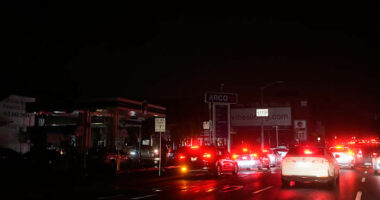Share this @internewscast.com

(The Hill) — The Campus Guardian Angel is looking to deploy drones to combat school shootings, running test trials in Florida.
Justin Marston, CEO of Campus Guardian Angel, explained to The Hill that their system positions drones at multiple locations around a school. These drones are activated by a silent emergency alarm, deploying in 5 seconds.
Once activated, the drones are operated by experts in Texas. Their aim is to stop an active shooter through non-lethal projectiles and provide video surveillance support to law enforcement.
“When the police arrive, we work alongside them, offering what can be likened to aerial assistance akin to smart, disposable police dogs,” Marston commented.
“There’s no need to unnecessarily endanger police officers. They shouldn’t face pressure to make split-second, life-or-death decisions. Let our system handle the tough jobs since it’s not at risk—it’s just expendable technology,” he continued.
Pilot programs are underway in three school districts in Florida, funded by state budget allocations. Marston disclosed that this system costs approximately $4 per student each month.
As 2024 saw hundreds of school shootings, educators have been exploring strategies to address these crises. While measures like school shooting drills have come under fire for causing distress among students, discussions about their true effectiveness persist.
Marston said their system has received bipartisan support, with skeptics typically interested after seeing a demonstration of the technology that can break through windows to stop a shooting.
“I think that generally, especially when people see the demonstration, when people see a live demonstration on site … 95 percent plus of people who see it go through that paradigm shift in that moment, no matter how mentally prepared they were to not like the idea when they came in” they change their minds, Marston said.
“But it comes down to the incredible capabilities of the pilots and what they can do with these drones, how fast they can move, what advantages they bring to law enforcement, how they can reduce the risk of collateral damage,” he added.










